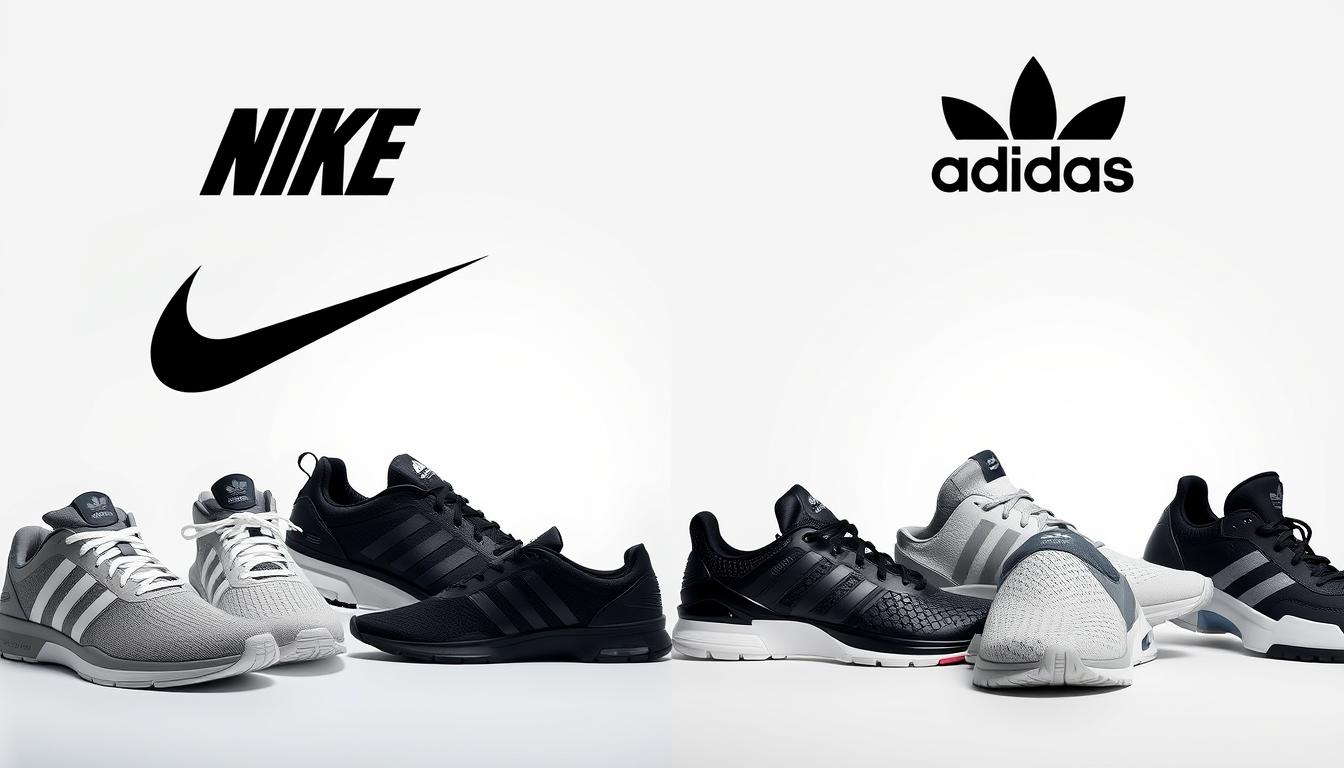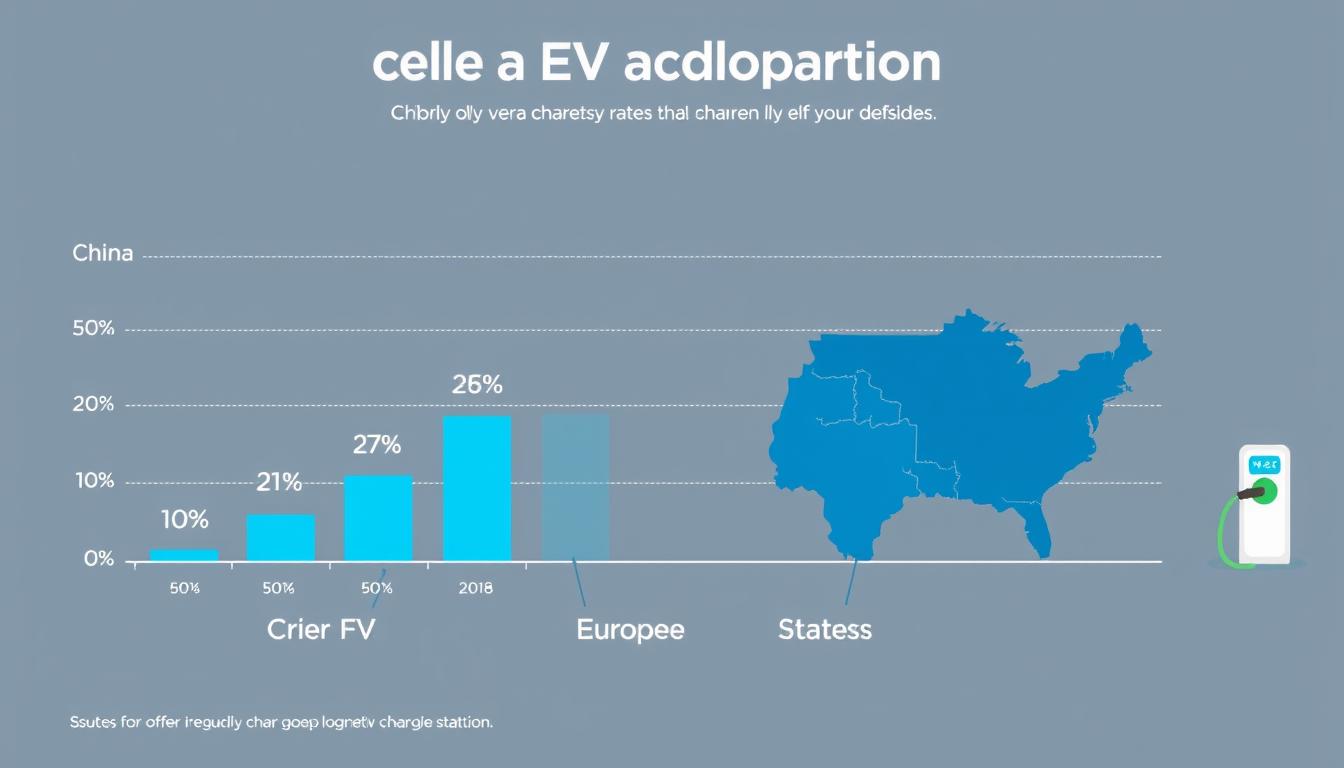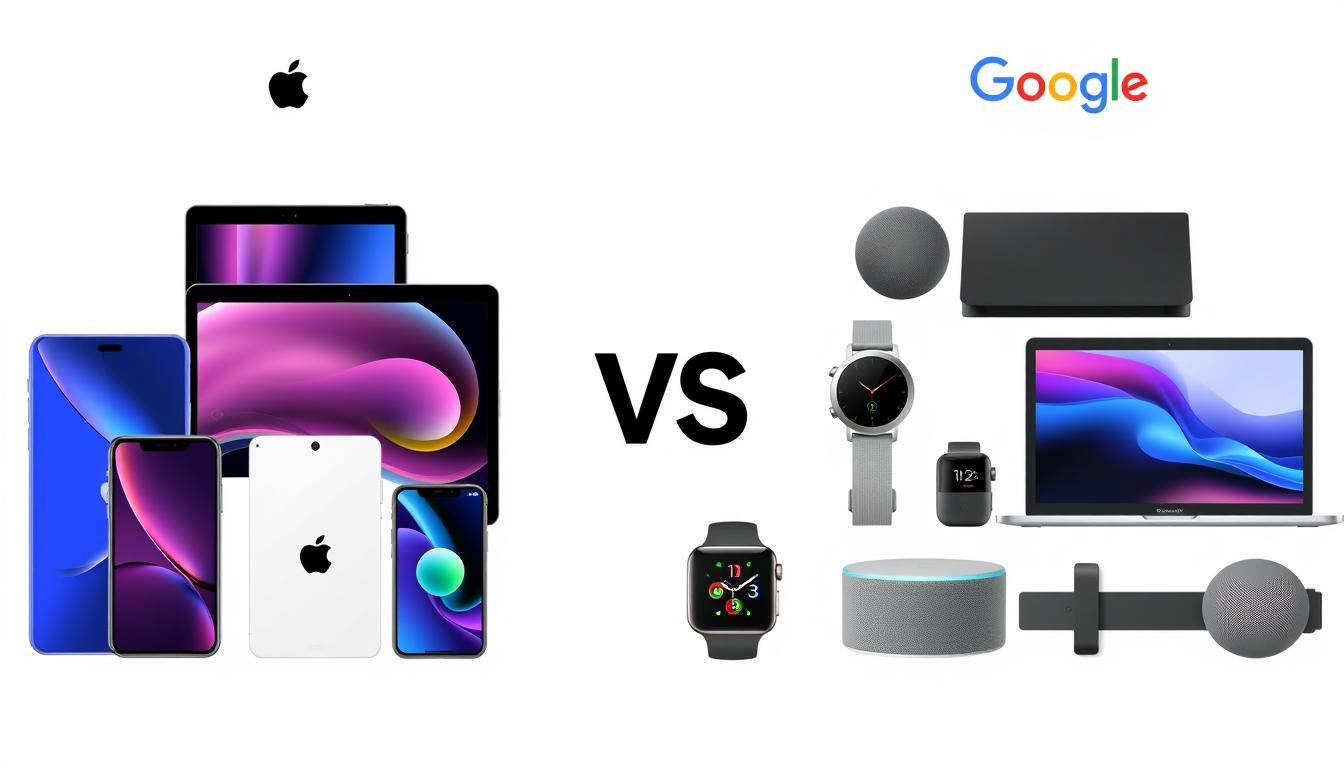When it comes to the sportswear industry, two titans stand above all others: Nike and Adidas. These powerhouses have transformed athletic wear into global fashion statements while competing fiercely for market dominance. Their rivalry extends beyond products into innovation, marketing strategies, sustainability initiatives, and cultural influence. This comprehensive Nike vs Adidas sports fashion industry comparison examines which brand is winning the race in today’s competitive landscape.
Both companies have evolved from humble beginnings to become cultural phenomena, with distinctive approaches to product development, branding, and consumer engagement. As we analyze their strengths, weaknesses, and strategic directions, we’ll uncover who truly leads the global sports fashion race in 2024.
Company Background & Brand Identity
The origins of these sportswear giants reveal much about their enduring brand identities and approaches to the market. While both have risen to global prominence, they began with distinctly different visions.
Nike: From Blue Ribbon Sports to Global Icon
Nike’s journey began in 1964 as Blue Ribbon Sports, founded by University of Oregon track coach Bill Bowerman and his former student Phil Knight. Initially operating as distributors for Japanese shoe company Onitsuka Tiger (now ASICS), they launched their own line in 1971, adopting the name “Nike” after the Greek goddess of victory. The iconic Swoosh logo, designed by graphic design student Carolyn Davidson for just $35, has become one of the most recognizable symbols worldwide.
Nike’s brand identity centers on performance, innovation, and empowerment. Their legendary “Just Do It” slogan, introduced in 1988, transcended advertising to become a cultural mantra encouraging people to push beyond limitations. This ethos of athletic achievement and personal triumph remains at the core of Nike’s brand messaging.
Adidas: A Legacy of Craftsmanship
Adidas traces its roots to 1924 Germany, where Adolf “Adi” Dassler began crafting athletic footwear in his mother’s laundry room. Initially partnering with his brother Rudolf in the Dassler Brothers Shoe Factory, the siblings eventually split after WWII, with Rudolf founding Puma while Adi established Adidas in 1949. The company name combines Adi’s nickname with the first syllable of his surname.
Adidas gained international recognition when the German national football team wore their boots during their 1954 World Cup victory. The brand’s identity balances athletic performance with cultural relevance, embodied in their “Impossible is Nothing” slogan that emphasizes breaking barriers through determination and creativity. Their distinctive three-stripe logo has become synonymous with both sporting excellence and street style.
Nike’s Core Values
- Innovation-driven approach
- Performance excellence
- Individual empowerment
- Competitive spirit
- Bold, cutting-edge design
Adidas’ Core Values
- Heritage and craftsmanship
- Cultural integration
- Collaborative creativity
- Sustainable innovation
- Authentic sportswear roots
Product Innovation & Design Trends
Innovation serves as a critical battleground in the Nike vs Adidas sports fashion industry comparison, with both brands investing heavily in proprietary technologies and sustainable design approaches.
Nike’s Innovation Ecosystem
Nike has built its reputation on groundbreaking technologies that enhance athletic performance. The Air cushioning platform, introduced in 1979 and evolved through multiple iterations, remains one of the most successful innovations in footwear history. More recent developments include:
- Flyknit Technology: Introduced in 2012, this revolutionary manufacturing method creates virtually seamless uppers from high-strength fibers, reducing waste by approximately 60% compared to traditional cut-and-sew methods.
- React Foam: Launched in 2018, this proprietary cushioning system delivers exceptional energy return and durability while maintaining lightweight properties.
- ZoomX: Nike’s most responsive foam to date, offering 85% energy return for elite running performance.
- Nike Adapt: Self-lacing technology controlled via smartphone app, representing Nike’s venture into smart wearables.
Nike’s innovation strategy centers on its Advanced Innovation Team, which works closely with athletes to identify performance needs and develop solutions. The company invests approximately $1.5 billion annually in research and development, maintaining dedicated innovation centers in Oregon, Boston, and Paris.
Adidas’ Technological Approach
Adidas has countered with its own impressive technological innovations, often focusing on material science and manufacturing processes:
- Boost Technology: Introduced in 2013, this revolutionary cushioning system uses thermoplastic polyurethane (TPU) particles to provide superior energy return and comfort.
- Primeknit: Adidas’ answer to Flyknit, offering a seamless, sock-like fit with reduced material waste.
- 4D Technology: Developed in partnership with Carbon, this 3D-printed midsole technology allows for precisely tuned cushioning zones based on athlete data.
- Futurecraft.Loop: A fully recyclable performance running shoe made from a single material that can be broken down and reused in new footwear.
Adidas’ innovation approach emphasizes collaboration, partnering with organizations like Parley for the Oceans to develop materials from recycled ocean plastic. The company has established the Adidas MakerLab as an open-source platform for collaborative innovation, inviting designers and creators to contribute to product development.
Nike’s Design Philosophy
Nike’s aesthetic tends toward bold, performance-oriented designs with cutting-edge visual elements. The brand frequently introduces disruptive colorways and silhouettes that push boundaries, exemplified by the Air Max and Jordan lines.
Adidas’ Design Philosophy
Adidas balances heritage with innovation, often incorporating classic elements into modern designs. The brand has successfully revived vintage models like the Superstar and Stan Smith while infusing them with contemporary technology.

Marketing Strategies & Celebrity Endorsements
The marketing approaches of Nike and Adidas represent distinct philosophies in brand communication, with both leveraging powerful storytelling and influential partnerships to connect with consumers.
Nike’s Emotional Storytelling
Nike has mastered the art of emotional marketing, creating campaigns that transcend product promotion to deliver powerful messages about human potential. Their approach focuses on:
- Inspirational Narratives: Campaigns like “Dream Crazy” featuring Colin Kaepernick demonstrate Nike’s willingness to take stands on social issues while inspiring consumers to pursue their ambitions regardless of obstacles.
- Athlete-Centered Stories: Nike humanizes elite athletes by showcasing their struggles and triumphs, creating relatable narratives that resonate with everyday consumers.
- Digital Engagement: With over 300 million social media followers across platforms, Nike maintains an industry-leading digital presence with 0.02% average engagement rate.
Nike’s endorsement strategy centers on securing partnerships with the most prominent athletes across multiple sports. The company invests approximately $1.4 billion annually in endorsement contracts, including landmark deals with:
- LeBron James ($32 million lifetime deal)
- Cristiano Ronaldo ($20 million annually)
- Serena Williams ($15 million annually)
- Michael Jordan (Jordan Brand generates over $5 billion annually)
Adidas’ Cultural Integration
Adidas takes a more culturally integrated approach to marketing, positioning itself at the intersection of sports, fashion, and entertainment:
- Lifestyle Focus: Campaigns emphasize how sports influence broader culture, appealing to consumers who value athletic performance and style equally.
- Sustainability Messaging: Initiatives like “End Plastic Waste” highlight Adidas’ environmental commitments, resonating with eco-conscious consumers.
- Community Building: With 29 million social media followers and a higher engagement rate of 0.04%, Adidas fosters deeper connections with smaller but more engaged audiences.
Adidas’ endorsement strategy diversifies beyond traditional athletes to include cultural influencers:
- Lionel Messi ($25 million annually)
- Pharrell Williams (Humanrace collaboration)
- Beyoncé (Ivy Park partnership)
- Bad Bunny (collaborative collection)
The company has also invested heavily in team sponsorships, including Manchester United ($95 million annually) and Real Madrid ($120 million annually).
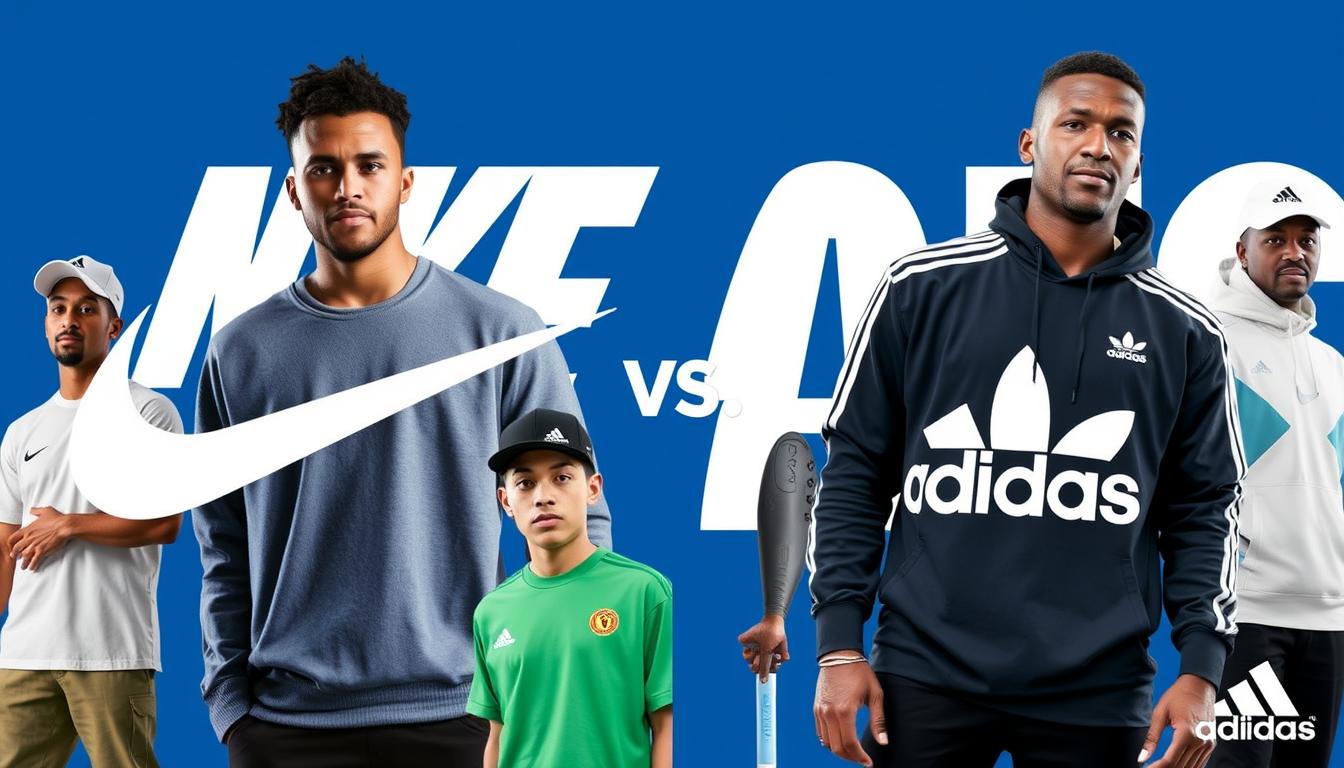
Sustainability & Ethical Practices
As consumer awareness of environmental and social issues grows, sustainability has become a crucial battleground in the Nike vs Adidas sports fashion industry comparison. This heightened awareness reflects a broader shift in consumer values, where individuals increasingly prioritize ethical practices and eco-friendly products in their purchasing decisions.
As a result, both Nike and Adidas are not only competing for market share but also striving to establish themselves as leaders in sustainable practices, which can significantly influence brand loyalty and consumer trust. This competitive landscape compels both companies to innovate and adopt more transparent and responsible practices, making sustainability a pivotal factor in their business strategies.
Nike’s Move to Zero
Nike launched its comprehensive “Move to Zero” initiative in 2019, outlining the company’s journey toward zero carbon and zero waste. Key components include:
- Carbon Reduction: Nike aims to reduce carbon emissions across its global supply chain by 30% by 2030, in line with the Paris Agreement’s 1.5°C target.
- Material Innovation: The company has developed Nike Grind, a material made from recycled athletic footwear and manufacturing scrap that has diverted over 130 million pounds of waste from landfills.
- Water Conservation: Nike has reduced freshwater use in textile dyeing and finishing by 30% through its ColorDry technology.
- Circular Design: The Nike Circular Design Guide provides principles for creating products that can be easily disassembled and recycled.
Nike has faced criticism for labor practices in its supply chain, though the company has implemented more rigorous monitoring systems and increased transparency in recent years. The company publishes an annual Impact Report detailing progress on environmental and social goals.
Adidas’ Environmental Commitment
Adidas has positioned sustainability as a core business strategy rather than a separate initiative, with ambitious targets including:
- Plastic Elimination: Through its partnership with Parley for the Oceans, Adidas has produced over 40 million pairs of shoes using recycled ocean plastic since 2015.
- Circular Economy: The Futurecraft.Loop program creates fully recyclable performance footwear designed to be remade into new products.
- Carbon Neutrality: Adidas aims to achieve carbon neutrality across its own operations by 2025 and throughout its entire supply chain by 2050.
- Material Innovation: The company has committed to using only recycled polyester in all products by 2024.
Adidas has been publishing annual sustainability reports since 2001, demonstrating a long-term commitment to environmental accountability. The company has also been recognized for its efforts to improve working conditions in supplier factories, though challenges remain in ensuring living wages throughout its supply chain.
Nike’s Sustainability Strengths
- Comprehensive carbon reduction strategy
- Innovative materials research
- Strong water conservation initiatives
- Transparent reporting mechanisms
Nike’s Sustainability Challenges
- Complex global supply chain oversight
- Historical labor controversies
- High production volume environmental impact
- Product durability concerns
Adidas’ Sustainability Strengths
- Pioneer in ocean plastic utilization
- Early adopter of sustainability reporting
- Ambitious recycled material targets
- Innovative circular design approaches
Adidas’ Sustainability Challenges
- Supply chain emissions reduction
- Living wage implementation
- Chemical management in manufacturing
- Product end-of-life solutions
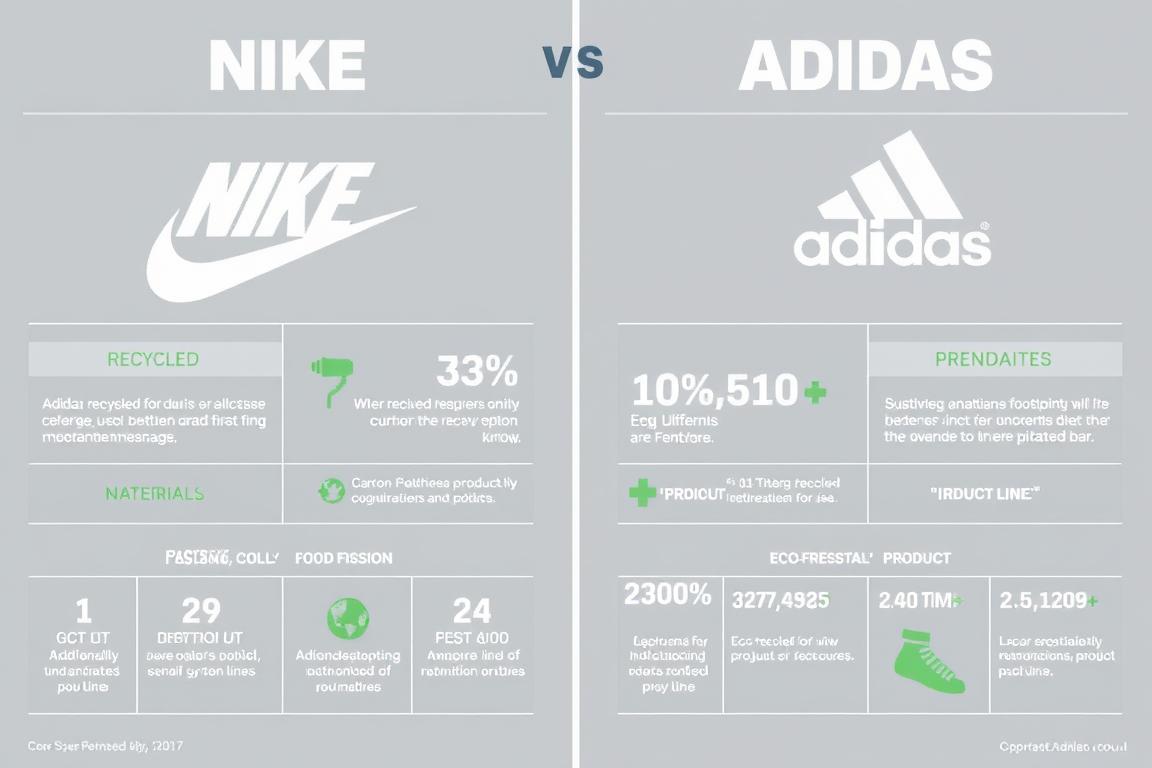
Financial Performance & Revenue Growth
Financial metrics provide concrete evidence of each brand’s market position and operational effectiveness in the Nike vs Adidas sports fashion industry comparison.
Revenue and Profitability
Nike maintains a substantial lead in overall financial performance, with FY2024 revenue of $51.36 billion compared to Adidas’ $23.19 billion in 2023. This gap has widened in recent years, with Nike experiencing more consistent growth despite global market challenges.
| Financial Metric | Nike (FY2024) | Adidas (2023) |
| Annual Revenue | $51.36 billion | $23.19 billion |
| Net Income | $5.70 billion | -$81 million (loss) |
| Gross Profit Margin | 44.56% | 47.52% |
| Operating Income | $6.31 billion | $289 million |
| Market Capitalization | $129.24 billion | $43.54 billion |
Adidas experienced significant financial challenges in 2023, recording a net loss primarily due to the termination of its partnership with Kanye West’s Yeezy brand, which resulted in approximately $540 million in lost revenue. This abrupt end to a highly lucrative collaboration not only impacted immediate sales figures but also affected brand perception and consumer loyalty, leading to further declines in market confidence.
However, the company’s higher gross profit margin indicates potential for recovery with effective inventory management and strategic repositioning. By focusing on its core competencies and leveraging its established brand heritage, Adidas aims to regain lost ground. The implementation of targeted marketing campaigns and a renewed emphasis on product innovation could play a crucial role in attracting consumers back to the brand, particularly in key markets where it has historically performed well.
Growth Drivers and Business Models
Nike’s financial success stems from several key strategic advantages:
- Direct-to-Consumer Focus: Nike has aggressively expanded its DTC channels, which now account for approximately 40% of total revenue with higher profit margins than wholesale.
- Digital Acceleration: The company’s digital sales grew 24% in 2023, driven by the Nike app and membership program that boasts over 300 million members globally.
- Product Innovation Pipeline: Continuous introduction of premium-priced performance products maintains higher average selling prices.
- Geographic Diversification: Strong performance across multiple regions provides resilience against regional economic fluctuations.
Adidas has implemented a strategic reset focused on:
- Core Market Concentration: Refocusing resources on key markets where the brand has historical strength, particularly Europe and China.
- Product Category Prioritization: Emphasizing football, running, and lifestyle categories where the brand has competitive advantages.
- Operational Efficiency: Cost-cutting measures aimed at improving profitability, including supply chain optimization and inventory management.
- Brand Revitalization: Increased marketing investment in core brand identity to strengthen consumer connections.
Consumer Demographics & Loyalty
Understanding the target audiences and consumer loyalty patterns reveals important distinctions in how Nike and Adidas position themselves in the marketplace. Nike’s marketing strategy focuses heavily on performance and the athlete’s journey, fostering a strong emotional connection with consumers who aspire to excel in sports. This connection is reinforced through high-profile endorsements and community engagement initiatives that resonate with their core audience.
On the other hand, Adidas emphasizes a blend of performance and lifestyle, appealing to consumers who prioritize fashion and cultural relevance alongside athletic functionality. By tapping into current trends and promoting sustainability, Adidas effectively attracts a demographic that values both style and social responsibility. The loyalty patterns observed in these brands reflect their ability to adapt to consumer preferences and societal shifts, further solidifying their positions in the competitive landscape.
Target Demographics
Nike and Adidas appeal to somewhat different consumer segments, though with significant overlap:
Nike’s Core Audience
- Age Range: Primarily 16-45 years old, with strongest appeal to Gen Z and younger Millennials
- Gender Distribution: 58% male, 42% female
- Income Level: Middle to upper-middle income
- Psychographics: Performance-oriented, competitive, brand-conscious, digitally engaged
- Regional Strength: Dominant in North America, growing in Asia
Adidas’ Core Audience
- Age Range: Primarily 18-45 years old, with stronger appeal to Millennials and Gen X
- Gender Distribution: 55% male, 45% female
- Income Level: Middle income, value-conscious
- Psychographics: Style-conscious, culturally aware, sustainability-minded
- Regional Strength: Dominant in Europe, strong in emerging markets
Nike has successfully positioned itself as the brand of choice for serious athletes and those who identify with athletic achievement. The company’s marketing emphasizes performance and competitive spirit, appealing to consumers who view sports as central to their identity.
Adidas has cultivated a more lifestyle-oriented image that bridges sports performance with fashion and cultural relevance. This approach resonates with consumers who value versatility and see athletic wear as an extension of their personal style rather than purely functional equipment.
Brand Loyalty Metrics
Consumer loyalty indicators reveal important differences in how customers engage with each brand:
| Loyalty Metric | Nike | Adidas |
| Net Promoter Score | 32 | 28 |
| Repeat Purchase Rate | 58% | 52% |
| Brand Advocacy Rate | 43% | 39% |
| Customer Retention | 67% | 61% |
| Social Media Engagement | 0.02% | 0.04% |
Nike maintains higher overall loyalty metrics, particularly in repeat purchase rates and customer retention. The company’s membership program, which offers early access to products and personalized recommendations, has been particularly effective at fostering loyalty.
While Adidas trails slightly in most loyalty metrics, its higher social media engagement rate suggests more meaningful connections with a smaller but more engaged audience. The brand’s sustainability initiatives have been particularly effective at building loyalty among environmentally conscious consumers.
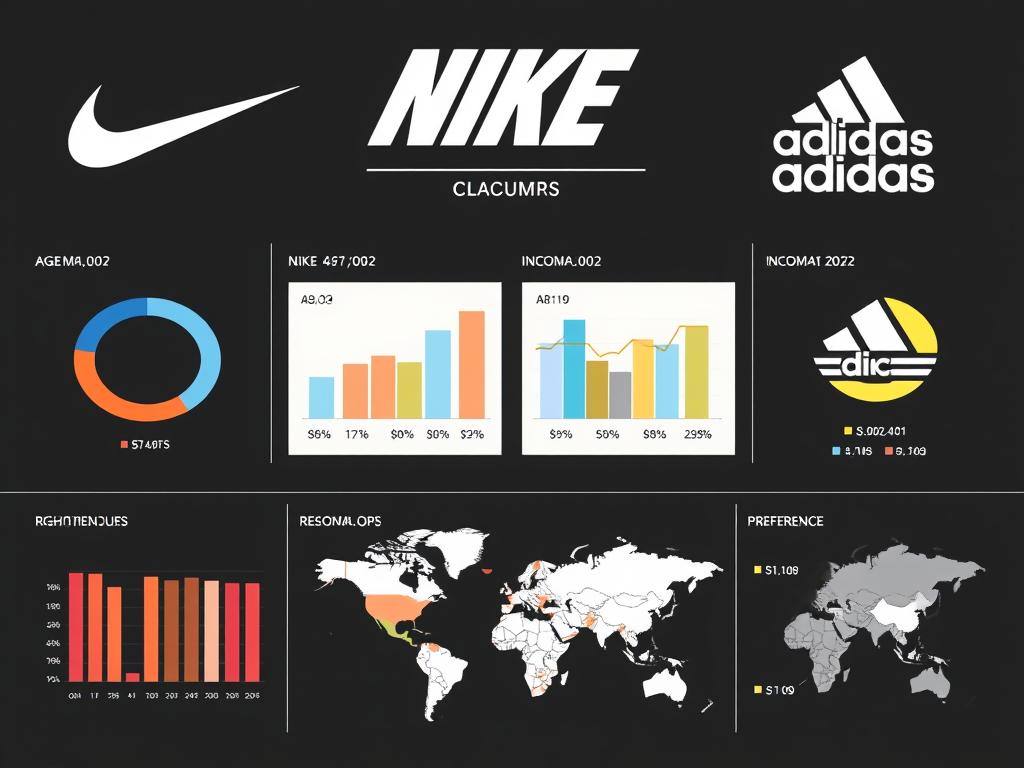
Collaborations & Limited Edition Releases
Strategic partnerships and exclusive product drops have become increasingly important in the Nike vs Adidas sports fashion industry comparison, driving brand heat and consumer excitement.
Nike’s Collaboration Strategy
Nike has mastered the art of high-profile collaborations that generate massive consumer demand and media attention:
- Off-White x Nike: The partnership with Virgil Abloh’s Off-White created some of the most coveted sneakers in recent history, with “The Ten” collection reimagining iconic Nike silhouettes.
- Travis Scott x Nike: Collaborations with the rapper have consistently sold out instantly, with the Travis Scott x Air Jordan 1 reselling for up to 500% above retail price.
- Sacai x Nike: The Japanese fashion brand’s deconstructed takes on Nike classics have created new design languages that influence the broader sneaker market.
- NOCTA: Drake’s sub-label with Nike has successfully bridged performance wear with luxury streetwear aesthetics.
Nike’s approach typically involves giving creative control to collaborators while maintaining core performance elements, creating products that balance innovation with cultural relevance. The company’s SNKRS app has become the primary platform for limited releases, creating a digital ecosystem around product drops.
Adidas’ Collaborative Approach
Adidas has pursued a diverse collaboration strategy that spans high fashion, music, and cultural influencers:
- Yeezy: Despite its controversial ending, the partnership with Kanye West transformed Adidas’ position in the fashion landscape and pioneered new design directions.
- Ivy Park x Adidas: Beyoncé’s athleisure line brings inclusive sizing and bold aesthetics to the Adidas portfolio, appealing to female consumers.
- Prada x Adidas: This luxury fashion collaboration elevates Adidas classics with premium materials and craftsmanship.
- Bad Bunny x Adidas: The partnership with the Puerto Rican artist has strengthened Adidas’ connection to Latin culture and music.
Adidas typically takes a more integrated approach to collaborations, often incorporating partners into broader brand initiatives rather than treating collaborations as standalone projects. The company has been particularly effective at leveraging collaborations to enter new market segments and cultural spaces.
Resale Market Impact
The secondary market performance of limited releases provides valuable insights into consumer demand and brand heat:
| Collaboration | Retail Price | Average Resale Price | Premium |
| Off-White x Nike Air Jordan 1 Chicago | $190 | $4,500 | 2,268% |
| Travis Scott x Nike Air Jordan 1 High | $175 | $1,800 | 929% |
| Adidas Yeezy Boost 350 V2 “Zebra” | $220 | $450 | 105% |
| Prada x Adidas Forum Low | $695 | $850 | 22% |
Nike collaborations typically generate higher resale premiums, indicating stronger demand and exclusivity perception. However, Adidas has achieved more consistent commercial success with its collaborative lines, particularly Yeezy, which generated an estimated $1.7 billion in revenue in 2021 before the partnership ended.

Challenges & Future Outlook
Both Nike and Adidas face significant challenges as they navigate an evolving industry landscape, with distinct obstacles and opportunities shaping their strategic directions.
Nike’s Challenges and Strategies
Despite its market leadership, Nike confronts several important challenges:
- Supply Chain Vulnerabilities: The pandemic exposed weaknesses in Nike’s global supply network, with factory closures in Vietnam and logistics disruptions causing inventory shortages. The company is investing $1 billion in supply chain digitization and diversification to build resilience.
- Chinese Market Volatility: Geopolitical tensions and competition from domestic Chinese brands like Li-Ning and Anta have created headwinds in this crucial growth market. Nike is increasing localized product development and marketing to strengthen its position.
- Digital Transformation: While Nike leads in e-commerce, fully integrating digital capabilities across the organization remains challenging. The company’s Consumer Direct Acceleration strategy aims to create seamless consumer experiences across channels.
- Sustainability Implementation: Balancing ambitious environmental goals with profitability and scale requires significant innovation. Nike is investing in circular design principles and sustainable materials research.
Looking forward, Nike’s strategy centers on:
- Accelerating direct-to-consumer channels to reach 60% of sales by 2025
- Expanding women’s business through dedicated product innovation and marketing
- Developing metaverse presence through NIKELAND and digital product experiences
- Implementing AI-driven personalization across consumer touchpoints
Adidas’ Challenges and Strategies
Adidas faces its own set of significant challenges:
- Post-Yeezy Repositioning: The termination of the Yeezy partnership created both financial and brand identity challenges. Adidas is reallocating resources to core product lines and new collaborations to fill this gap.
- North American Market Share: Adidas continues to struggle against Nike’s dominance in the crucial North American market. The company is increasing athlete endorsements and sports team sponsorships to strengthen its performance credentials.
- Premium Positioning: Adidas products often command lower price points than comparable Nike offerings, affecting profit margins. The brand is elevating product design and marketing to support higher price positioning.
- Digital Capabilities: While improving, Adidas’ e-commerce and digital marketing infrastructure lags behind Nike’s. The company is investing €1 billion in digital transformation through 2025.
Adidas’ forward strategy focuses on:
- Returning to core brand strengths in football, running, and originals categories
- Accelerating sustainability initiatives to differentiate from competitors
- Expanding direct-to-consumer channels to 50% of sales
- Developing stronger lifestyle positioning through cultural partnerships
“The future of sportswear isn’t just about performance or style—it’s about creating products that serve athletes while respecting planetary boundaries. Brands that master this balance will lead the next era of sports fashion.”
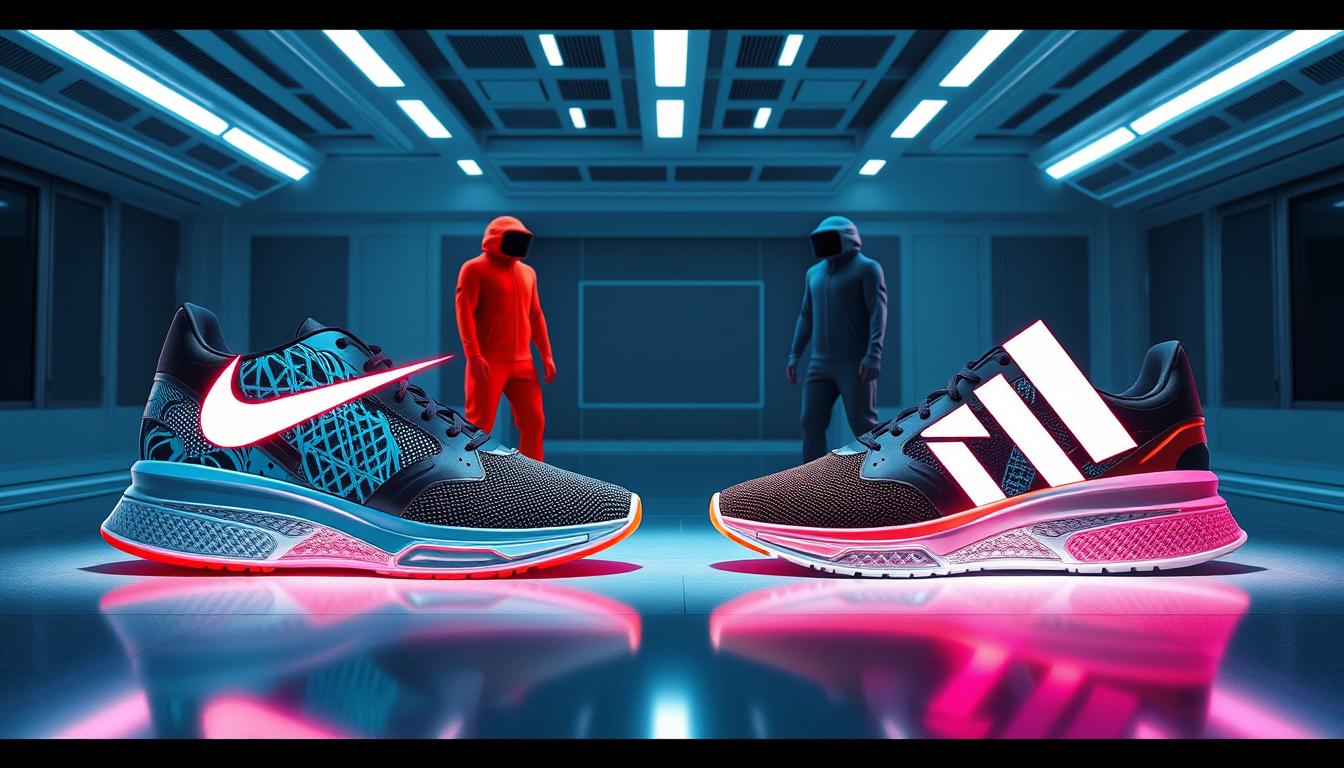
Conclusion: Who Leads the Race?
After examining multiple dimensions of the Nike vs Adidas sports fashion industry comparison, a nuanced picture emerges of their relative positions in the global marketplace.
Nike maintains clear leadership in overall market share, revenue generation, and financial performance. The company’s superior profitability, North American dominance, and effective direct-to-consumer strategy have created a substantial competitive advantage. Nike’s marketing resonates powerfully with performance-oriented consumers, while its innovation pipeline continues to set industry standards.
Adidas excels in several important areas, including sustainability leadership, European market strength, and cultural relevance. The brand’s balanced approach to performance and lifestyle positioning appeals to a broad consumer base, while its collaborative strategy has successfully integrated the brand into fashion and entertainment spheres.
Looking ahead, both brands face significant challenges in an evolving industry landscape. Supply chain resilience, digital transformation, and sustainability implementation will test their operational capabilities, while changing consumer preferences and emerging competitors will challenge their market positions.
While Nike currently leads the global sports fashion race by most quantitative metrics, Adidas’ strengths in sustainability and cultural integration position it well for future growth. The competition between these two giants continues to drive innovation and excellence across the industry, ultimately benefiting consumers through better products and more meaningful brand experiences.
Join Our Sports Fashion Community
Subscribe to receive monthly insights on industry trends, brand strategies, and exclusive interviews with sports fashion executives.
